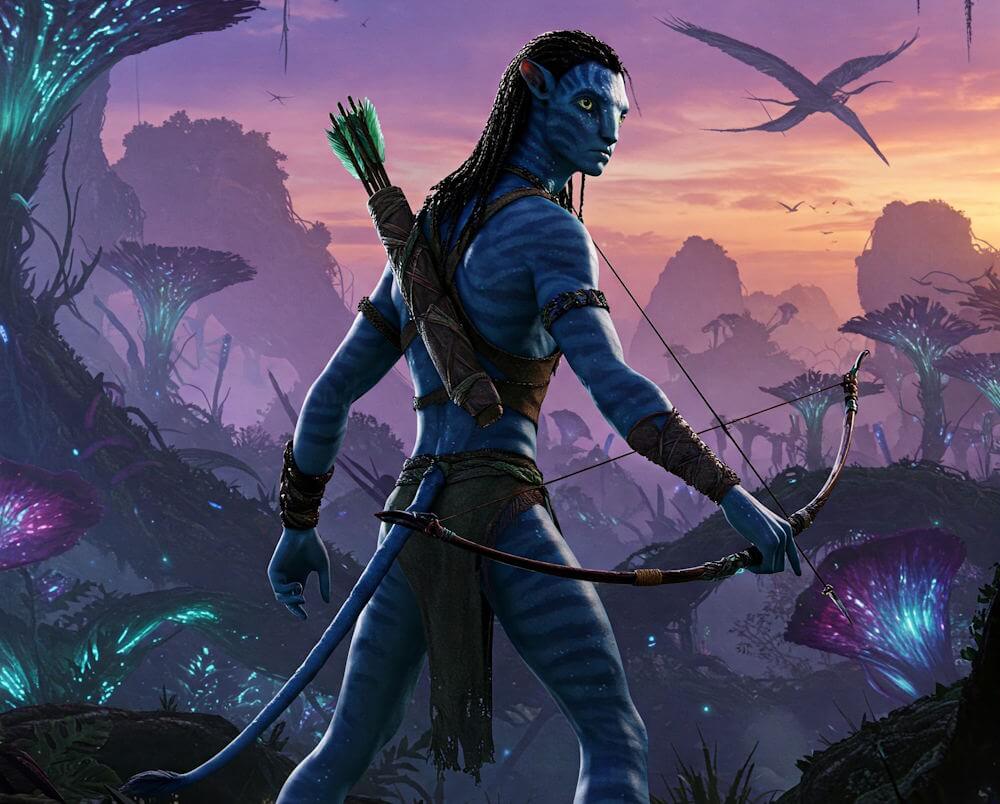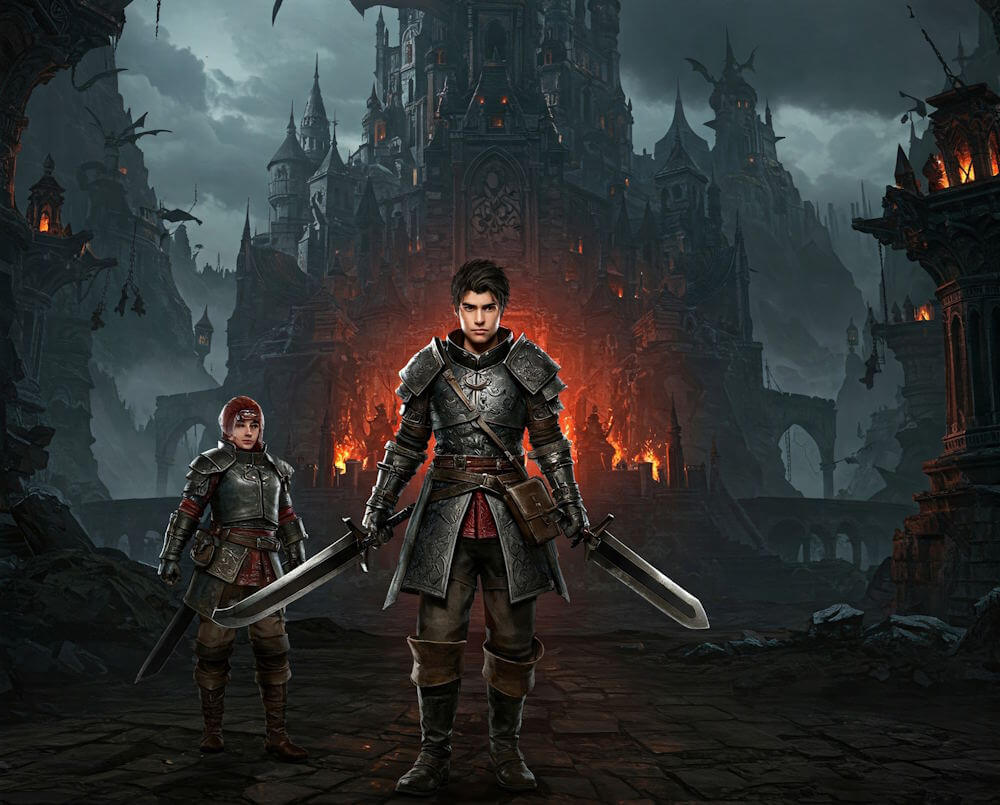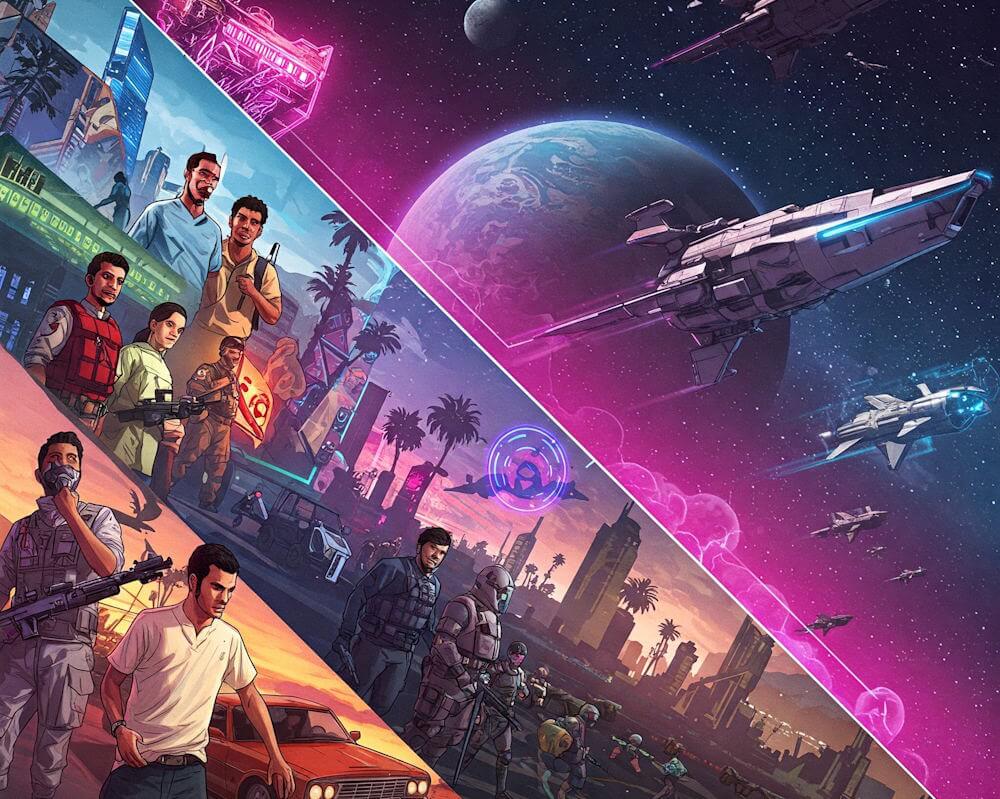Avatar: Frontiers of Pandora, developed by Massive Entertainment in collaboration with Ubisoft and the renowned film franchise’s creators, marks a significant addition to the gaming industry. Set in the rich and immersive world of James Cameron’s Avatar, this action-adventure title invites players to explore the vivid landscapes of Pandora. The development of the game has been highly anticipated, stemming from its connection to a beloved cinematic universe that has captivated audiences worldwide since the release of the first film in 2009.
Housed within this extensive franchise, Avatar: Frontiers of Pandora aims to build on the film’s iconic visual storytelling while providing an interactive experience that allows players to forge their own paths within the expansive world. As players step into the shoes of the Na’vi, they can expect an engaging narrative that intertwines themes of environmentalism, colonization, and the interconnectedness of life on Pandora. These elements resonate not only with the philosophical undertones of the films but also with a broader audience that values immersive storytelling in their gaming experiences.
When it comes to gameplay, Avatar: Frontiers of Pandora promises a rich exploration of Pandora’s diverse biomes, featuring an array of fauna and flora that players can interact with. The game’s mechanics are designed to encourage exploration and creativity, offering a balance between combat and navigation. Players were eager for a deep and engaging gameplay experience, one that matched the visual splendor of the Avatar films. With these high expectations, the gaming community eagerly awaited the release and potential impact of Avatar: Frontiers of Pandora within a competitive gaming landscape defined by innovative storytelling and stunning visuals.
Visuals and World-Building
Avatar: Frontiers of Pandora is renowned for its breathtaking graphics and meticulous artistic design, which play a crucial role in creating an immersive experience that transports players into the vibrant world of Pandora. The game’s visuals are characterized by their stunning detail, from the intricately rendered flora and fauna to the expansive landscapes that depict Pandora’s diverse ecosystems. This attention to detail not only enhances the aesthetic appeal but also aids in immersing players in the rich narrative that the game offers.
The depiction of Pandora’s ecosystems stands out prominently, showcasing a myriad of biomes, including dense jungles, floating mountains, and vibrant oceans. Each area is crafted with distinctive color palettes and dynamic environmental elements, such as weather changes and day-night cycles, which contribute to the overall realism of the game. Players can witness the life cycles of various species, emphasizing the interconnectedness of the ecosystem, which aligns closely with the themes presented in the Avatar film franchise. This deep connection between the visuals and the narrative reinforces the significance of preserving Pandora’s nature.
When compared to visuals in other contemporary games, Avatar: Frontiers of Pandora holds its own while still managing to evoke comparisons with major titles renowned for their graphics, such as Horizon Zero Dawn and Red Dead Redemption 2. However, while these games offer equally impressive visual spectacles, they often delve deeper into storytelling and character development. In contrast, Avatar: Frontiers of Pandora’s focus on stunning graphics occasionally overshadows the narrative depth, leaving players with a visually arresting experience that, while captivating, may feel somewhat superficial. This tension between visual appeal and narrative complexity is a critical aspect of the game’s reception and prompts further discussion about the balance between aesthetics and storytelling in modern gaming.
Gameplay Mechanics and Features
Avatar: Frontiers of Pandora offers an array of gameplay mechanics that contribute to its distinct identity within the open-world genre. Central to this experience is the combat system, which blends traditional shooting mechanics with unique abilities derived from the player’s Na’vi character. Players can utilize both ranged and close-quarters combat techniques, providing varied approaches to tackling adversaries. The incorporation of elemental abilities, reflective of the mystical environment of Pandora, adds another dimension to the confrontations, allowing players to engage in strategic, more personalized combat styles.
Exploration is another cornerstone of Avatar: Frontiers of Pandora. The game encourages players to traverse its stunning, expansive landscapes, teeming with flora and fauna inspired by the Avatar film universe. Players are empowered to climb, glide, and navigate various terrains in ways that mimic the acrobatic abilities of the Na’vi. This dynamic movement system enhances immersion and emphasizes the deep connection players can form with Pandora. Encountering diverse ecosystems and hidden secrets rewards curiosity, making exploration both engaging and fulfilling.
Crafting systems in Avatar: Frontiers of Pandora provide a further layer of depth, allowing players to gather resources from the environment. This enables them to create weapons, gear, and other supplies crucial for survival and advancement within the game. The crafting mechanism not only adds an element of resource management but also complements the game’s focus on exploration, as players must discover materials to enhance their capabilities.
While these mechanics contribute significantly to the player experience, their effectiveness in enriching gameplay may vary. Though combat, exploration, and crafting offer engaging elements, the overall depth of these features can appear shallow when compared to other titles in the open-world genre. The balance between astounding visuals and robust gameplay mechanics remains a point of assessment for players venturing into this vibrant world.
Narrative and Character Development
Avatar: Frontiers of Pandora presents a narrative that, while visually captivating, may not resonate deeply with players seeking intricate storytelling and rich character arcs. The game’s premise invites players into the vibrant world of Pandora, where they assume the role of a Na’vi, navigating a conflict between their civilization and the encroaching human exploitation of their land. However, despite this compelling backdrop, several aspects of the narrative lend themselves to the criticism of being shallow.
The depth of the storyline is primarily driven by a series of quests that often resemble a familiar formula in open-world gaming. Players are tasked with engaging in combat, collecting resources, and developing skills, yet these mechanics occasionally overshadow the overarching narrative. Instead of evolving through organic interactions, character arcs can feel predictable, with protagonists and antagonists embodying archetypal traits without sufficient layers or development. The emotional stakes, which are crucial for player investment in a storyline, often remain unaddressed or inadequately explored, leading to a disconnect between the player and the characters’ outcomes.
Moreover, while the visual aesthetics of the game successfully immerse players in Pandora’s stunning landscapes, the character interactions and dialogues often fall flat. The conversations can be brief and lack the nuance that fosters connection or empathy, which in turn detracts from any potential emotional engagement. It becomes increasingly apparent that narrative decisions are sometimes sacrificed for gameplay mechanics, leading to a disjointed experience rather than a coherent story. Thus, while Avatar: Frontiers of Pandora excels in delivering a breathtaking world, its narrative and character development showcase limitations that contribute to the criticism of its overall depth. This results in a gaming experience that, despite its allure, may leave many players yearning for a more substantial narrative foundation.
Pacing and Progression
The pacing and progression of “Avatar: Frontiers of Pandora” presents an intriguing yet occasionally disjointed gameplay experience. At its core, the game encompasses a mission structure designed to engage players in the world of Pandora, yet it often feels imbalanced. Main missions are crafted with a sense of grandeur, propelling the narrative forward and immersing players in a visually stunning environment. However, there are moments when the pacing becomes erratic, as players may find themselves oscillating between high-stakes narrative beats and mundane side quests that lack depth.
Side quests serve as a fundamental component of the game’s structure. They are designed to enrich the world-building and offer players the opportunity to explore diverse aspects of Pandora. Yet, these activities sometimes fall short of providing meaningful engagement. Many side quests revert to repetitive tasks that do not significantly impact the overarching story or character development. This repetition can lead to a sense of disenchantment, as players invest time into objectives that offer limited reward, detracting from the primary narrative experience.
The overall gameplay loop integrates both missions and side quests into the player’s journey, establishing a rhythm that at times feels rewarding and at other times frustrating. While the primary missions often radiate excitement, the slower-paced side quests disrupt momentum, creating an uneven flow throughout the game. Players may find that although the initial allure of exploration and engagement with the vibrant world of Pandora is strong, the disparity in pacing can dampen their enthusiasm over time.
Ultimately, while “Avatar: Frontiers of Pandora” showcases a breathtaking landscape that captures the imagination, its pacing and progression may leave some players desiring a more consistent sense of achievement and engagement within the game’s expansive universe.
Multiplayer Experience
Avatar: Frontiers of Pandora offers players a vibrant and immersive environment to explore, but the multiplayer features raise important questions regarding their impact on the overall gaming experience. With cooperative gameplay at its core, the multiplayer modes aim to enhance player engagement and foster community connections. However, the execution of these features may leave some players feeling that they are less substantial than anticipated.
The cooperative aspect of Avatar: Frontiers of Pandora allows players to team up with friends or other users from around the globe. This format enables the sharing of experiences, strategies, and resources, which can enhance the joys of exploration and adventure. Players can engage in missions together, increasing the likelihood of successful completion due to the joint effort. However, some critics argue that while the multiplayer experience encourages collaboration, it does not significantly deepen the narrative or gameplay mechanics. This raises a concern regarding whether the game can stand on its own merits or if it relies too heavily on social interaction to engage players.
Another factor to consider is the balance between community involvement and gameplay immersion. Multiplayer features, while potentially enriching, can also serve as distractions. Players may find themselves focused on social interactions, such as chatting or coordinating with others, instead of fully immersing themselves in the beautifully crafted world of Pandora. The risk here is that the multiplayer experience, rather than adding depth, may detract from the narrative richness and exploration elements that the game initially set out to provide.
Ultimately, while Avatar: Frontiers of Pandora attempts to create a sense of community through its multiplayer features, the effectiveness of these options in enhancing the overall gaming experience is debatable. Players may enjoy connecting with others, but it remains to be seen whether this connection contributes meaningfully to the depth of the game or simply serves as a supplementary distraction.
Technical Performance and Issues
The technical performance of “Avatar: Frontiers of Pandora” has garnered significant attention since its release. Gamers and critics alike have noted both the impressive graphical fidelity and the various technical issues that can detract from the overall experience. The graphics are arguably one of the game’s standout features, showcasing lush, vibrant environments that depict the beauty of Pandora. However, this visual splendor does not always translate into a smooth gameplay experience.
Frame rates have been a point of contention, particularly on older gaming hardware. While many players have reported enjoying seamless gameplay at high frame rates, others have encountered noticeable drops and stuttering, especially in densely populated areas or during intensive action sequences. These performance inconsistencies can lead to frustration, potentially interrupting immersion and negatively impacting players’ enjoyment.
In addition to frame rate fluctuations, several bugs have been identified, ranging from minor graphical glitches to more severe issues that can disrupt gameplay progression. Players have reported instances of characters getting stuck in geometry or even game-breaking crashes that may require restarting the application. Such technical problems can be particularly disheartening for those looking to fully engage with the expansive world of Pandora.
Server stability has also been a topic of concern, especially for those participating in online multiplayer modes. Instances of server lag and disconnections have occasionally interrupted gameplay, creating a challenging environment for cooperative missions. This inconsistency can lead to disappointment as players rely on stable connections to enhance their multiplayer experiences.
In summary, while “Avatar: Frontiers of Pandora” offers stunning visuals that bring its world to life, technical performance issues, including frame rate problems, bugs, and server inconsistencies, can detract from the overall enjoyment. Addressing these concerns with patches and updates will be essential for enhancing the player experience. Players may hope for improvements in future updates, allowing them to fully appreciate the game’s artistic vision without the interference of technical flaws.
Critical Reception and Player Feedback
Upon its release, “Avatar: Frontiers of Pandora” garnered a mixed response from both critics and players. The game, which immerses players in the vibrant world of Pandora, received commendations for its stunning visuals and ambitious world-building. Reviewers from prominent gaming outlets highlighted the aesthetic appeal, noting the detailed graphics that effectively bring the lush landscapes of Pandora to life. Many players expressed admiration for the art direction, citing that it successfully captures the essence of the cinematic universe. Additionally, the voice acting and sound design contributed to an engaging atmosphere that enhanced the overall experience.
Despite the praise for its visual artistry, several criticisms emerged regarding the game’s depth and gameplay mechanics. Critics pointed out that while “Avatar: Frontiers of Pandora” excels in creating a breathtaking environment, the core gameplay elements tend to be rather shallow. Many players reported that the combat mechanics felt repetitive and lacked the necessary depth to keep them engaged throughout the adventure. Furthermore, some reviews noted that the storyline, while rooted in rich lore, did not offer enough substance or innovative twists to make it memorable. This sentiment was echoed by a segment of the player community, who sought a more substantial narrative experience.
In addition to concerns about gameplay, there were discussions surrounding technical issues, with some players reporting bugs that impacted their immersion. These technical hurdles further contributed to a sense of inconsistency in the overall game experience. Overall, player feedback reflects a blend of admiration and disappointment. While the visuals and immersive world are standout features of “Avatar: Frontiers of Pandora,” the critiques regarding shallow mechanics and technical challenges have sparked a conversation about the balance between aesthetic appeal and gameplay depth. As the community continues to engage with the game, it remains to be seen how developers will address these concerns moving forward.
Conclusion: A Stunning but Shallow Experience
As we reflect on the key aspects of “Avatar: Frontiers of Pandora,” it becomes evident that the game leaves players with a mixed bag of experiences. On one end, the game delivers a visually breathtaking portrayal of Pandora, successfully immersing players in its vibrant ecosystems and lush landscapes. The dedication to creating a stunning world is an undisputed strength of the title, impressing many with its intricate details and fluid animations. Exploration feels rewarding as players traverse vast environments filled with bioluminescent flora and fauna, effectively capturing the essence of the Avatar films.
However, the allure of the game’s visual design is contrasted by its narrative and gameplay shortcomings. While the graphics are undeniably compelling, the storyline feels shallow, lacking the depth and emotional engagement that one might expect from a game set in such a rich universe. The quest mechanics often rely on repetitive tasks that can detract from the initial excitement, making the experience feel less fulfilling over time. As players engage with the game’s various features, the absence of a robust narrative framework stands out, serving as a disappointment to those looking for a more integrated experience.
Looking ahead, the future of the Avatar franchise raises questions. Can developers enhance the next installment to create a more balanced mixture of visual spectacle and engaging content? Will subsequent releases manage to build on the foundation laid by “Frontiers of Pandora” while addressing its weaknesses? It remains to be seen whether the captivating aesthetics can ultimately compensate for the narrative and gameplay gaps. As fans await further developments, the hope is for a deeper exploration of Pandora’s lore that complements its stunning visuals, potentially leading to a more fulfilling gaming experience.



